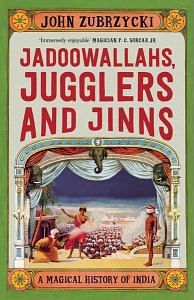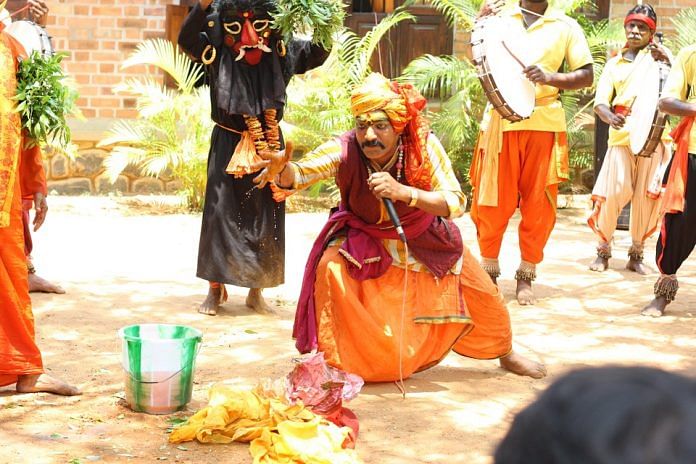John Zubrzycki’s Jadoowallahs, Jugglers and Jinns is meticulously researched and crisply narrated, and will charm magic aficionados and lay readers alike.
Even as Western magicians adopted the tricks and treats of Indian magic in the 19th and early 20th centuries, they were busy badmouthing the conjurers of the East and dismissing them as a bunch of clumsy, low grade tricksters.
One of the most interesting parts of John Zubrzycki’s new book Jadoowallahs, Jugglers and Jinns: A Magical History of India is his account of how racism and the colonial mindset informed Western magicians’ attitude towards their Indian counterparts.
For example, Harry Kellar, an American magician who came to Calcutta in 1877 as part of his tour of discovery of the magical wonders of the East, wrote: “Apart from their skill as snake charmers, in the Basket Trick, and one or two other illusions, the ability of the entire fraternity of Indian jugglers is beneath contempt.”
Zubrzycki also mentions a special meeting of the Magic Circle at Anderton’s Hotel in London’s Fleet Street in February 1918. Among those present was Robert Elliott, an old India hand and a former professor of ophthalmology in the Madras Medical College, who was known for his rational mind and his keen interest in oriental magic. The theme of the gathering was: ‘The Great Indian Rope Trick — in tradition and in reality’. Its purpose was to examine the “eye-witness” accounts of India’s most baffling magical feat.
The rope trick, wherein the conjuror threw a piece of rope into the air, made it stand upright and then climbed it before disappearing from view, had been written and talked about for centuries. Travellers to India — from the Arabian Sufi mystic Mansur al-Hallaj in the 10th century to Moroccan adventurer Ibn Battuta in the 14th century right down to scores of Europeans in later years — had claimed to have seen the marvel. In his memoirs, the Mughal emperor Jahangir too mentions seeing it and being utterly stupefied by it.
Yet, innumerable Western magicians touring India found no Indian mage who could execute the trick in front of them. It seemed as though the Great Indian Rope Trick was a great Indian hoax — the stuff of legend and magical lore eagerly picked up by generations of travellers from hearsay rather than actual observation. Elliott and others at London’s Magic Circle meeting wanted to establish, once and for all, their theory that the trick never existed outside the fanciful and vastly embellished testimonies of so-called eye-witnesses.
The book brings together these and countless other historical anecdotes to compile a story of Indian magic that is as rich as it is wondrous. The author also delves into myths, legends, apocrypha and ancient scriptures, unearthing India’s magical roots where the line between sacred asceticism and secret magic was often blurred. The charms and spells contained in the Atharva Veda, the centrality of the concept of maya or illusion to the Hindu idea of magic, tantra, necromancy, alchemy — the book embraces the whole gamut of ancient ideas and occult traditions that became the wellspring of Indian magic.
Hence, the jadoowallah who could perform seemingly miraculous feats — lie on a bed of nails, walk on fire, swallow a sword or be buried for days before emerging from his interment alive and well — was regarded not merely as a conjuror or an illusionist. His powers were often believed to derive from the same sacred source as that of the mystic or the yogi.
With the advent of Europeans to India, stories about the wonders of Indian legerdemain spread to the West. The fascination was further fuelled by a few Indian magicians who travelled there. The most famous of them was Ramo Samee (probably a corruption of Ramaswamy), a magician from south India, who went to England in 1809 and become a household name there for his astonishing jugglery and sleight of hand. Samee stayed on, married an Englishwoman, and held shows throughout the country and in America.
By now, public interest in the mysterious East was so fervid that Western magicians began to assume exotic names like The Fakir of Ava, the Fakir of Oolu, the Fakir of Shiva and so on. These conjurors adopted Oriental costumes and stage props and performed Indian street magic routines. One such was the basket trick, in which a boy was put into a basket just big enough to hold him, a sword driven into it again and again to the sound of bloodcurdling screams from the boy, the basket revealed to be empty when opened and then the boy materialising unscathed from the midst of the spectators.
Despite the scepticism of the West, Indian magic continued to thrive. The 20th century threw up a steady stream of impressive Indian conjurors such as Amar Nath Dutt, Professor S.C. Ghosh, Professor Alvaro (a Gujarati called Nahar Perianan Alvaro), Gogia Pasha and of course, P.C. Sorcar, who was perhaps the most successful of all in taking Indian magic to the world.
Meticulously researched and crisply narrated, Jadoowallahs, Jugglers and Jinns is a magical mystery tour de force that will not only appeal to magic aficionados, but also charm the lay reader with its glimpse into the little-known world of Indian jadoo.
 Shuma Raha is a senior journalist and author of ‘The Love Song of Maya K and Other Stories’, which was published recently.
Shuma Raha is a senior journalist and author of ‘The Love Song of Maya K and Other Stories’, which was published recently.



